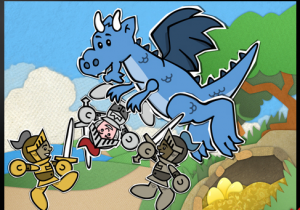
Until such time when Facebook and texting take over their lives, pretend play-acting and storytelling take up most of kids' play time and mental space. At least for my seven-year-old daughter, that's still the case.
So when I was asked to review the Toontastic app for the iPad by one of its creators, Andy Russell, I was happy to oblige. And so was Lucy.
Negotiating the app is as intuitive as could be. A voice takes you through the whole process in creating five different scenes: the setup, conflict, challenge, climax, and resolution, and she explains what each scene means. The setup, for instance, introduces the characters and story setting, the climax helps the main character solve the problem, and the resolution shows that the problem has been settled.
For each scene, the creator can choose from a variety of different backdrops -- everything from a dragon's field with a mysterious nest of golden eggs, to pirate ships, to a castle gate, to a shipwreck.
Now it's time to choose characters. Is your story set in medieval times with a knight clad in armor, a queen, and a set of dungeon keys? Or would you prefer to have a peg-legged, one-eyed sword-wielding pirate with his trusty pet monkey duel a golden-bearded, hook-armed villain? Throw in a blue dragon, a red-headed princess, a pink octopus, a harp, and a scuba diver, and you've got the makings of a gripping play.


